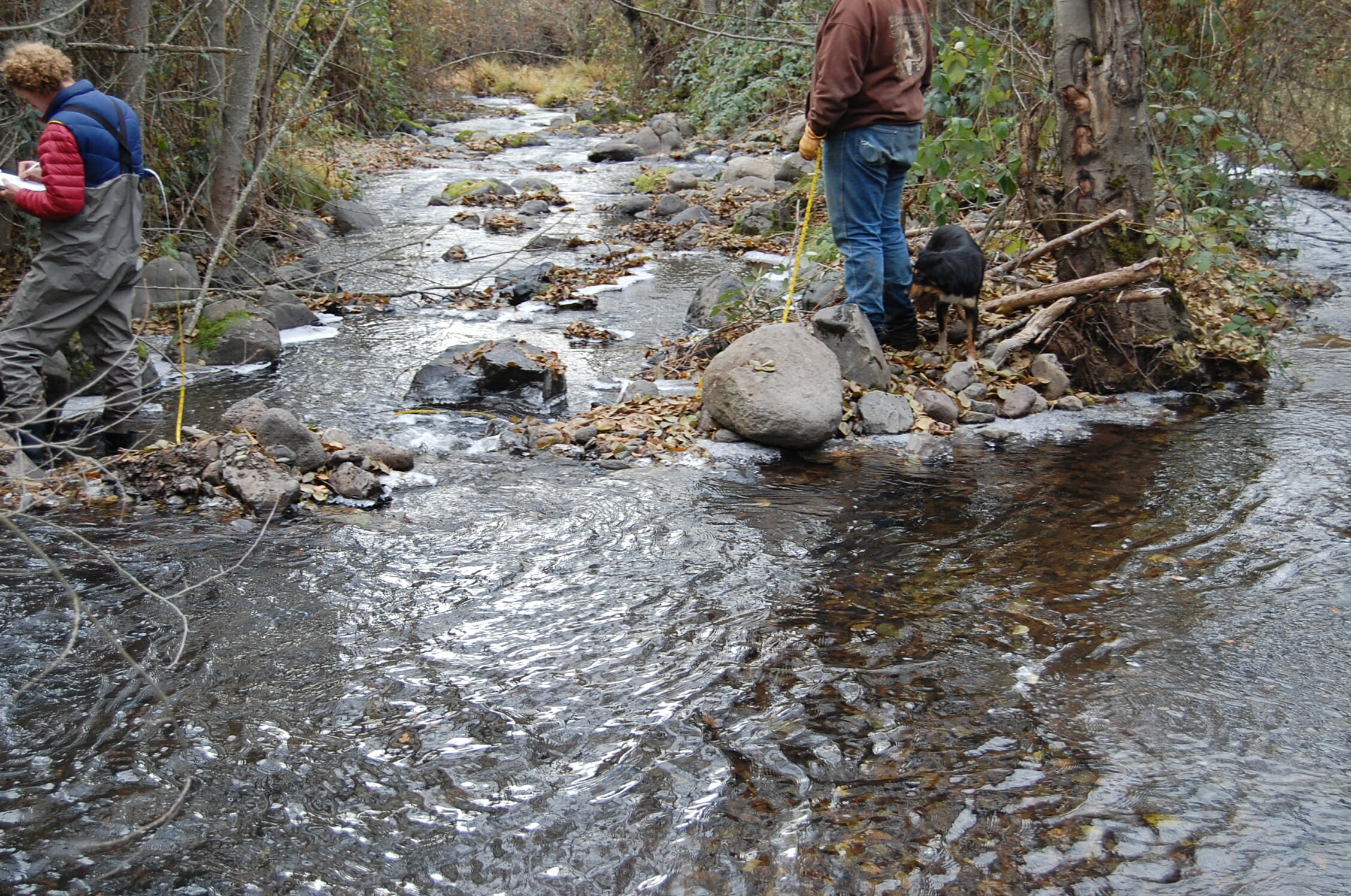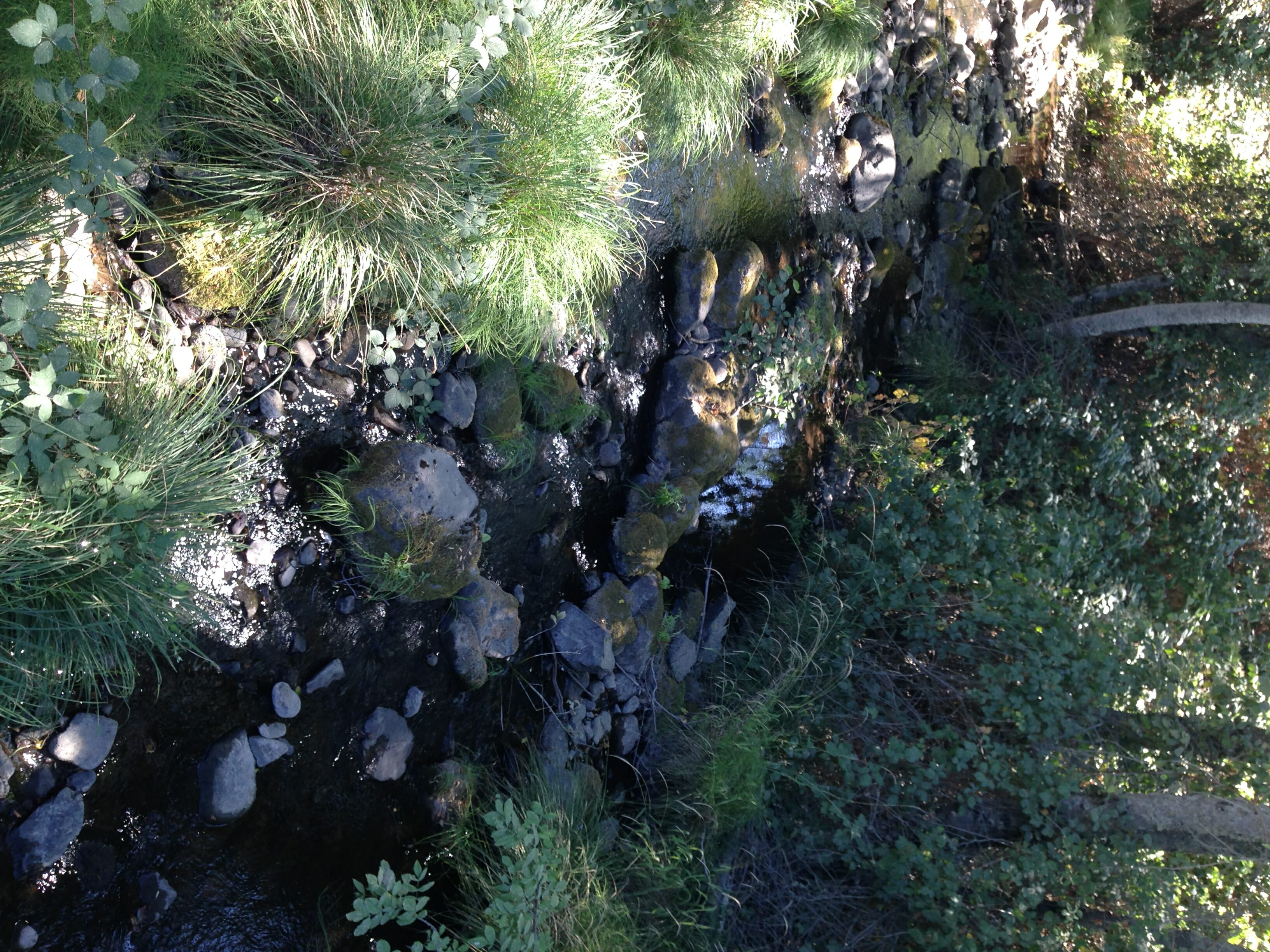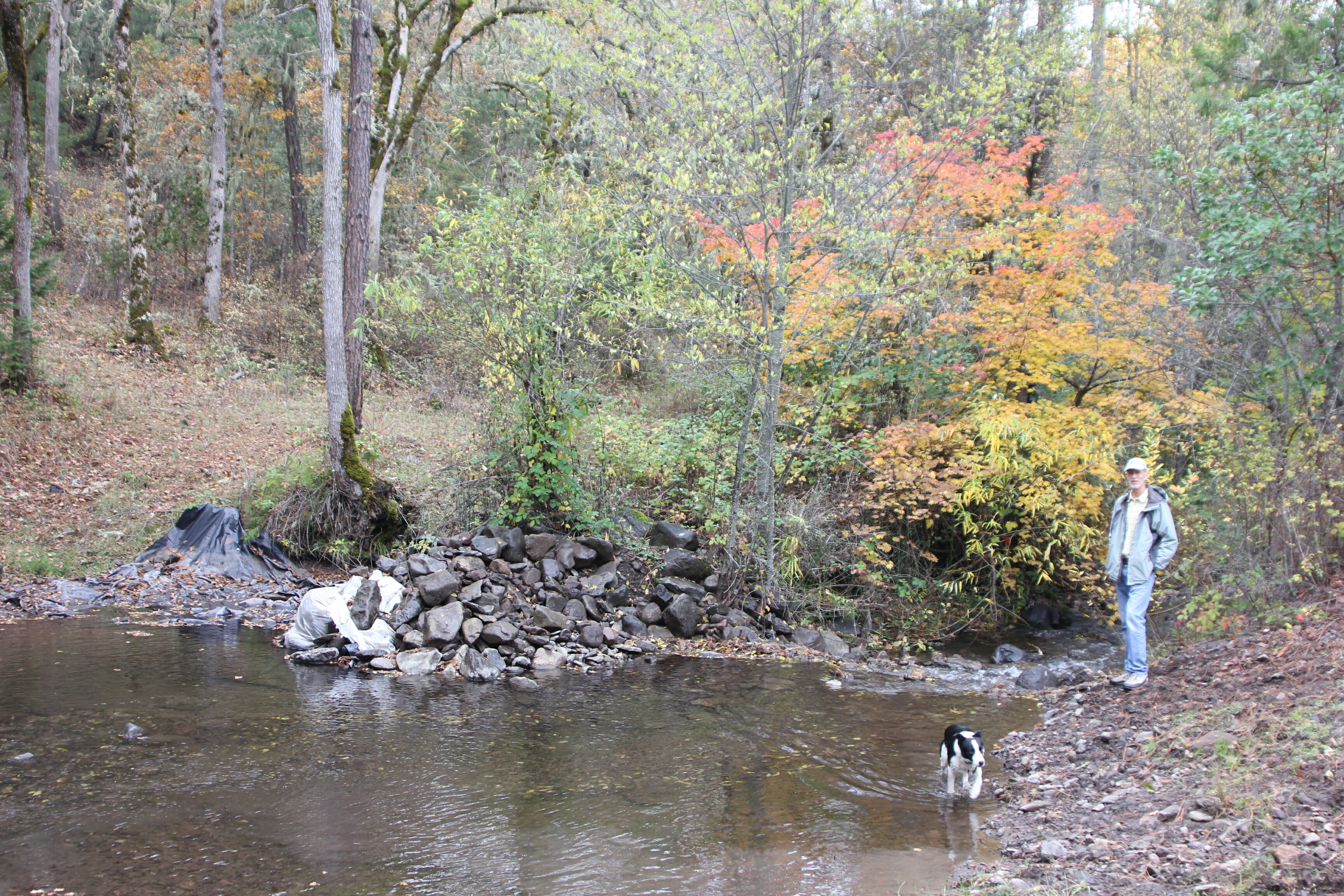Krumweide point-of-diversion, Salt Creek, Rogue River watershed, Oregon. Photo Brian Barr/RRWC
By Chrysten Lambert
Southern Oregon is an angler’s paradise. Here, we are blessed with multiple species of game fish—native redband trout, steelhead and salmon primary among them. As in many other parts of the West, many of these species—particularly those that require cold water with low turbidity—have been declining in numbers. Coho salmon are but one of several species now listed under the Endangered Species Act.
The single greatest threat to most ESA listed species is loss or degradation of habitat. For fish and for species that inhabit the riparian zone, habitat is often compromised by inadequate flow and water quality conditions. In this region, sub-optimal flow and poor water quality are mostly attributable to out-of-stream demands for water such as municipal use and irrigation.
Competing demands for water are only increasing as climate change shifts precipitation patterns in southern Oregon and extended periods of drought intensify crop and municipal water needs. Luckily, in the Rogue Basin many people are working collaboratively to find solutions that can improve and protect instream flows for native species, while also sustaining water deliveries for municipal, agricultural and other uses.
 (L) Salt Creek, on the C2 Cattle Ranch. Photo Brian Barr/RRWC
(L) Salt Creek, on the C2 Cattle Ranch. Photo Brian Barr/RRWC
A great example of such solutions is the partnership Trout Unlimited and Rogue River Watershed Council have forged with the C2 Cattle Company. Salt Creek, a tributary to Little Butte Creek, flows through the C2 Ranch and provides critical habitat for coho salmon and other aquatic species.
Salt Creek currently supports ESA listed coho salmon, steelhead, and native cuthroat trout. Limiting factors for coho and steelhead in this watershed are agricultural diversions that reduce instream flows and degrade water quality in Little Butte Creek and its tributaries.
TU, RRWC, and C2 are working together to improve water supply and management on the ranch. The principal tactic for doing this is to eliminate all water diversions from Salt Creek to protect critical habitat and instream flow, while shifting irrigation water supplies to a less ecologically important stream.
C2 has also agreed to retire irrigation of one pasture in order to support desired flow and water quality conditions.
At the heart of this project is an agreement between a willing seller (C2) and buyer (TU) to purchase the most senior water right on Salt Creek, 70 acres (1.2cfs) of water annually, and dedicate that right to instream flow. In addition to the instream transfer, the ranch has agreed to complete a water source swap which will eliminate all of their water use from Salt Creek, instead moving their remaining irrigation diversions to Wasson Canyon Creek (which has natural barriers to fish passage).
 (R) Middle Salt Creek. Photo Chrysten Lambert/TU
(R) Middle Salt Creek. Photo Chrysten Lambert/TU
While TU is handling the water transaction, the instream rights will be owned by the Oregon Water Resources Department.
In addition to the water acquisition, the project includes removal of fish passage barriers in Salt Creek. The Rogue River Watershed Council is engaging all the water users on the stream and will work on engineering and technical designs to address all ten fish passage barriers here.
Seven of these ten barriers are considered among the highest priority for the whole Rogue Basin in the Oregon Department of Fish & Wildlife’s inventory of fish passage barriers for removal. Elimination of C2’s irrigation diversions on Salt Creek will allow them to be removed altogether rather than retrofitted to improve fish passage.
This partnership is the kind of pragmatic solution that we need in southern Oregon to resolve our water supply and wildlife management challenges—a mutually beneficial collaboration that helps keep sustainable ranching on the landscape while improving habitat conditions for at-risk native fish.
Chrysten Lambert is director of Trout Unlimited’s Upper Klamath River program, based in Klamath Falls, Ore.



